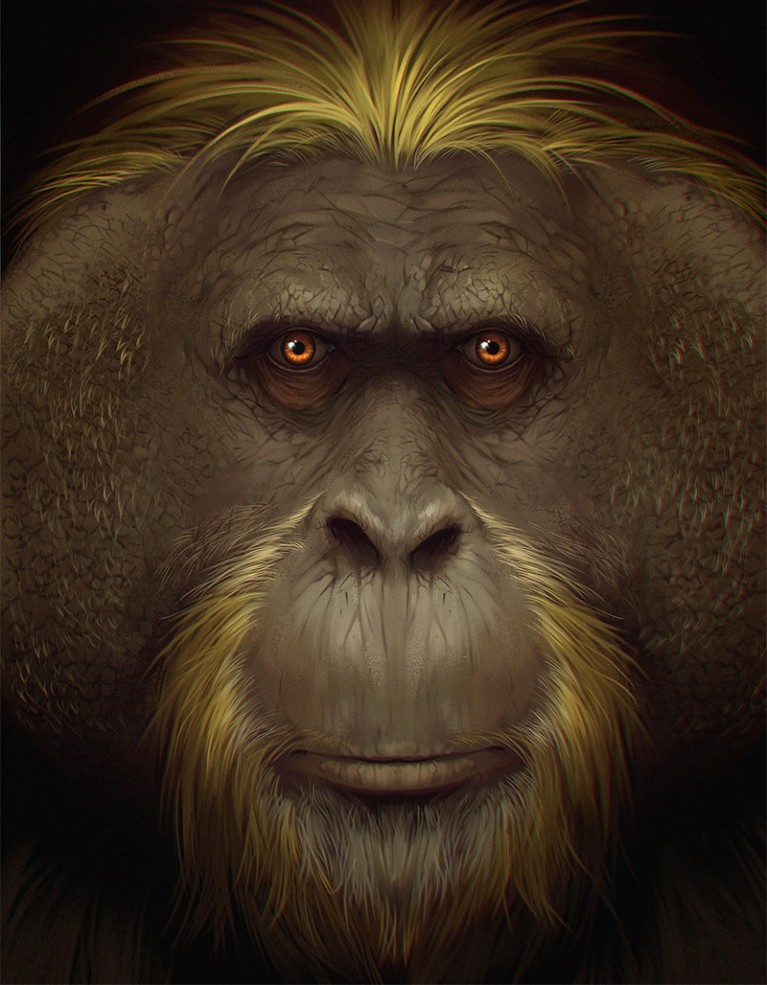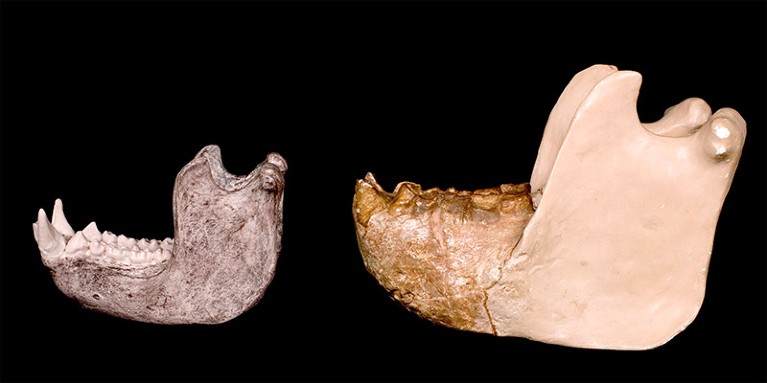
The interface between cognition, emotion, and motivation is thought to be of central importance in understanding complex cognitive functions such as decision-making and executive control in humans. Although nonhuman apes have complex repertoires of emotional expression, little is known about the role of affective processes in ape decision-making. To illuminate the evolutionary origins of human-like patterns of choice, we investigated decision-making in humans’ closest phylogenetic relatives, chimpanzees (Pan troglodytes) and bonobos (Pan paniscus). In two studies, we examined these species‘ temporal and risk preferences, and assessed whether apes show emotional and motivational responses in decision-making contexts. We find that (1) chimpanzees are more patient and more risk-prone than are bonobos, (2) both species exhibit affective and motivational responses following the outcomes of their decisions, and (3) some emotional and motivational responses map onto species-level and individual-differences in decision-making. These results indicate that apes do exhibit emotional responses to decision-making, like humans. We explore the hypothesis that affective and motivational biases may underlie the psychological mechanisms supporting value-based preferences in these species.
General Discussion
Overall, our results indicate that chimpanzees and bonobos show affective and motivational responses when making decisions. In the temporal task, apes responded more negatively to waiting, exhibiting all three target behaviors more often following a choice for the delayed option. In the risk task they responded negatively to undesired outcomes, producing all three target behaviors more often when they chose the risky option and received the low-value payoff. In addition, apes selectively attempted to switch their choices following undesired outcomes. These results indicate that the types of emotional displays that apes exhibit in conspecific social interactions, such as negative vocalizations, are also exhibited in economic decision-making contexts. Overall, these results indicate decision-making in apes involves affective and motivational processes, similar to those seen in humans.
Some weaker evidence further suggests that these processes may be related to overall differences in choice preferences. In line with previous work [21], [22], [23], [24], the current studies indicted that chimpanzees and bonobos show divergent patterns of decision-making: chimpanzees were more patient and more risk-prone than were bonobos. Some aspects of the apes’ responses mapped onto these differences in their preferences at the species- or individual- level. In the temporal choice task, the more patient chimpanzees showed more intense negative responses (with more emotional vocalizations specifically) while waiting than did bonobos. In the risk task, the most risk-averse bonobos showed the strongest reactions to disparities in reward outcome and made the most attempts to correct their choices following undesirable outcomes. Notably, these patterns of emotional responses in the two species did not always align with our original predictions (based on human studies) that bonobos might be more impatient and more risk-averse because they have strong negative reactions in response to waiting for rewards and receiving bad payoffs. In the temporal task, chimpanzees in fact exhibited more negative reactions to waiting than did the bonobos. In the risk task, chimpanzees and bonobos showed similar negative responses to bad outcomes (both in terms of the affect score measure and choice switching behaviors). However, these emotional responses had different impacts on the two species: whereas bonobos who often attempted to correct their choices (e.g., showed high levels of ‘regret’) were most risk-averse, there was no relationship in chimpanzees. Moreover, whereas bonobos modulated their current choices based on previous outcome, chimpanzees did not.
What can account for these patterns in the two species? In the risk task, there was some suggestion that differences in reward sensitivity may have been an important influence on the two species’ behavior. In particular, chimpanzees may be so motivated to acquire the high-quality payoffs that they showed strong preferences for the risk option, despite pronounced negative response to receiving the bad outcome. That is, although both species reacted negatively to receiving the bad outcome, only bonobos actually modulated their subsequent choices in response to previous outcomes. Another possibility raised by result from the discounting task is that these species differ in their ability to regulate their emotional responses in some contexts. Human are able to exert cognitive control over their emotional responses, in particular by reappraising how they view events. These regulatory strategies are quite complex, and are thought to be lacking in some nonhuman models [5]. However, evidence from apes suggests that individuals may be able to engage in some relevant regulatory behaviors while waiting delays [80]. While previous studies have assessed how apes can use self-distraction to redirect attention, this type of paradigm could also be used to address whether chimpanzees and bonobos differ in their ability regulate their emotional responses when waiting. A final possibility is that although both species exhibited negative responses such as scratching and vocalizing, they actually differed in terms of the more specific emotion they experienced response to the two tasks. An analogous phenomenon occurs in chimpanzees’ and bonobos’ hormonal responses to food competition. While both species show similar behavioral responses with faced with competition with partners of various relative dominance status, these behaviors are supported by different underlying biological mechanisms: chimpanzees exhibit changes in testosterone in response to unequal-sharing situations, whereas bonobos exhibit changes in cortisol [81]. Thus, in the current set of studies, the underlying psychological experiences of the two species may have differed in a subtle way that our behavioral measures did not capture, because delineating fine-grained differences in emotions is difficult in animals who cannot provide self reports.
An important consideration for future research is whether these emotional responses play a causal role in ape decision-making, as they do in humans. The current results indicate that apes show emotional responses to decision-outcomes, and some of the evidence relating patterns of emotional responding to patterns of choice is also suggestive of the possibility that these processes causally influence choice strategies. However, future research should more directly investigate the causal role of emotions in ape decision-making. There are several approaches that could address this issue. First, studies that involve larger numbers of trials per subject would have more power to relate emotional reactions to subsequent choices on a trial-by-trial basis. Although we examined how previous outcome related to subsequent choice in the current risk task, larger number of trials would be needed to conduct similar trials involving emotional response data (given that such responses do not occur every trial). Second, studies that actively manipulate the apes’ emotional state could examine whether such changes can shift strategies, much like studies involving mood induction in humans [34], [35], [36], [37]. Indeed, there is some suggestion that related psychological states play a causal role in ape behavior. In particular, chimpanzees and bonobos are more risk-prone following competitive interactions [24]. As some views suggest that competitive contexts alter emotional or motivation states in apes [82], [83], this indicates that manipulating the ape’s emotional or motivational state might causally impact their patterns of decision-making. Finally, affect can influence human preferences via several different pathways – including immediate emotions at the time of choice and expectant emotions about what will happen in the future [1]. Physiological measures that assess the apes’ emotional state immediately prior to choice [55],[84] could therefore be used assess the role of anticipatory emotions in these species’ decision-making. This type of evidence will be critical to further test the hypothesis that emotion and motivation shape the divergent economic preferences exhibited by chimpanzees and bonobos at the mechanistic level.
Previous studies comparing temporal choices in chimpanzees and bonobos involved delay titration methods that identify a unique ‘indifference point’ for each individual [21], whereas the current study used a temporal task with set delays. Comparisons of their risk preferences have used quantitative variance in the amount of amounts received [22], variation in knowledge concerning the location of rewards provided by the risky option [23], and qualitative differences in food types as in the current study [24]. Although it is difficult to conclusively demonstrate species differences in behavior or cognitive skills, overall this set of results suggest that differences between the two species might be robust across different populations of apes and at least some variations in task structure. The current studies investigated the proximate-level factors (e.g., emotional and motivation responses) that may underlie this difference. At the ultimate evolutionary level, we have proposed that chimpanzees and bonobos may exhibit these divergent species-typical preferences due to differences in their wild feeding ecology. Relative to bonobos, who are thought to have evolved in more productive environments, chimpanzees on average face more seasonal food variability, more competition in food patches, and have less access to common fallback foods like terrestrial herbaceous vegetation [85], [86], [87], [88],[89], [90], [91]. Our evolutionary hypothesis is therefore that feeding ecology has shaped psychology in Pan such that chimpanzees are more willing than bonobos to accept ‘costs’ to obtain food – including in situations involving delays, travel time, effort, or risk – thus promoting adaptive patterns of decision-making in these species. Interestingly, chimpanzees and bonobos do not show differences in how they respond to ambiguity (or knowledge about probabilities of outcomes) when level of risk is equated [66], nor did they generally differ on most tasks in battery examining a wide range of cognitive skills [92]. This suggests that these species may exhibit targeted differences in only certain aspects of cognition and behavior that are related to differences in their socio-ecology [93].
These types of evolutionary analyses suggest that studies of apes may be important for addressing a major problem in the human cognitive sciences: characterizing functional systems supporting complex cognitive functions in the mind and the brain. Although investigations of chimpanzee and bonobo neurobiology are rare, largely due to important ethical considerations, non-invasive studies of these apes may provide a critical test for mapping function onto structure – especially for psychological features that may not be widely shared by common model species. For example, observed differences in the relative size and cytoarchitecture of orbitofrontal cortex of chimpanzees and bonobos [94] are consistent with this region’s role in reward processing, emotional responses, and decision-making. Our results further predict a number of neurobiological differences between chimpanzees and bonobos: the anterior insula’s role in risk-aversion [95] and the ventral striatum’s role in both risky and intertemporal choice [95], [96] suggest that bonobos and chimpanzees may show divergence in these regions [97], [98]. More broadly, comparative analyses of brain evolution indicate that brain systems or networks can be characterized by examining whether given regions evolve together [99]. This type of evolutionary approach suggests that psychological capacities that evolve in tandem may act together to solve a given ecological or social problem. If the patterns of decision-making seen in Pan are an adaptive solution to their divergent natural ecologies, then changes in complex abilities such as decision-making may require joint selection on emotional and cognitive systems. The integration of such ultimate-level hypotheses into the human cognitive sciences can lead to an understanding of psychological and neurobiological systems in humans that is grounded in evolutionary function – what such systems are actually designed to do.
Source: PLOS
44.276672
-85.874794


